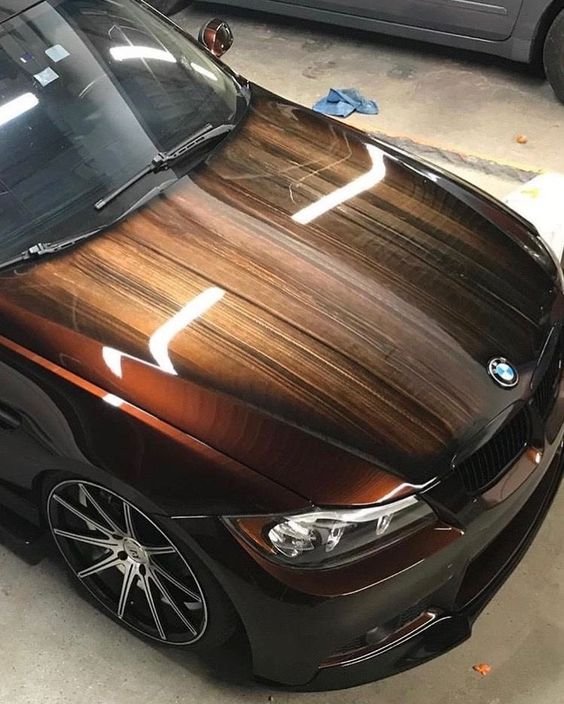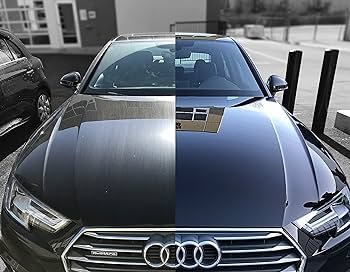The Dos and Don'ts of Washing a Vehicle with a Wrap
Vehicle wraps have become a popular choice for car owners looking to add a unique touch to their vehicles. Whether it's a full wrap or a partial one, these vinyl wraps offer a cost-effective way to change the appearance of a car while also providing protection to the original paintwork. However, many car owners are often unsure about how to properly care for a wrapped vehicle, particularly when it comes to washing. In this article, we'll explore whether a vehicle with a wrap can be washed regularly and the precautions you need to take to ensure you don't damage the wrap.
Understanding Vehicle Wraps
Before we delve into the dos and don'ts of washing a wrapped vehicle, let's take a moment to understand what a vehicle wrap is and how it differs from traditional paint.
A vehicle wrap is essentially a large vinyl decal that is applied directly to the surface of a car. It can be used to completely cover the vehicle or as a partial wrap to add accents or graphics. The vinyl material used in wraps is highly durable and is designed to withstand the elements, including sun, rain, and snow.
One of the main advantages of a vehicle wrap is that it can be easily removed without damaging the underlying paintwork. This makes it an ideal option for car owners who want to change the appearance of their vehicle without committing to a permanent paint job.
Can You Wash a Vehicle with a Wrap?
Now, let's address the question at hand: Can you wash a vehicle with a wrap? The short answer is yes, you can wash a wrapped vehicle just like you would wash a regular car. However, there are some precautions you need to take to ensure you don't damage the wrap in the process.
Dos and Don'ts of Washing a Wrapped Vehicle
When washing a wrapped vehicle, there are several dos and don'ts to keep in mind:
Use a pH Neutral Car Wash Soap: When washing a wrapped vehicle, it's important to use a pH neutral car wash soap. Avoid using harsh detergents or abrasive cleaners, as these can damage the vinyl wrap and cause it to fade or peel.
Hand Wash Whenever Possible: While it may be tempting to take your wrapped vehicle through an automated car wash, it's best to hand wash it whenever possible. This will give you more control over the cleaning process and reduce the risk of damaging the wrap.
Use a Soft Sponge or Microfiber Cloth: When washing your wrapped vehicle, use a soft sponge or microfiber cloth to gently clean the surface. Avoid using abrasive brushes or scrubbers, as these can scratch the wrap and cause damage.
Rinse Thoroughly: Before washing your wrapped vehicle, be sure to rinse it thoroughly with water to remove any loose dirt or debris. This will help prevent scratching the wrap during the washing process.
Dry with a Soft Cloth: After washing your wrapped vehicle, be sure to dry it thoroughly with a soft cloth. Avoid air drying or using a high-pressure air blower, as this can cause water spots to form on the wrap.
Avoid High Pressure Washing: While it may be tempting to use a high-pressure washer to clean your wrapped vehicle, this can actually cause damage to the wrap. The high-pressure water can cause the edges of the wrap to lift and peel, so it's best to avoid this cleaning method altogether.
Avoid Harsh Chemicals: When cleaning your wrapped vehicle, avoid using harsh chemicals or solvents, as these can damage the vinyl wrap and cause it to fade or discolor. Stick to gentle car wash soaps that are specifically designed for use on wrapped vehicles.
Inspect Regularly: Finally, be sure to inspect your wrapped vehicle regularly for any signs of damage or wear. If you notice any peeling or lifting of the wrap, be sure to address it as soon as possible to prevent further damage.
Conclusion
In conclusion, washing a vehicle with a wrap is entirely possible, but it requires some special care and attention. By following the dos and don'ts outlined in this article, you can keep your wrapped vehicle looking its best for years to come. Remember to use a pH neutral car wash soap, hand wash whenever possible, and avoid high-pressure washing and harsh chemicals. With the right care and maintenance, your vehicle wrap can continue to turn heads for years to come.
How Ceramic Coating Transforms Auto Detailing
Ceramic coatings, also known as nano-coatings or glass coatings, are liquid polymer solutions that, when applied to a vehicle's exterior surfaces, chemically bond with the paint to create a protective layer. The primary component of ceramic coatings is silicon dioxide (SiO2), which forms a transparent, durable shell over the paintwork. Additionally, ceramic coatings may contain other ingredients such as titanium dioxide, polysiloxanes, and proprietary additives to enhance specific properties.
The key characteristics of ceramic coatings include hydrophobicity, chemical resistance, UV protection, and scratch resistance. Hydrophobicity refers to the ability of ceramic coatings to repel water, causing it to bead up and roll off, carrying dirt and contaminants with it. This property keeps the car cleaner for longer and makes washing and maintenance easier. Ceramic coatings also provide a protective barrier against environmental contaminants such as bird droppings, insect splatter, tree sap, and road salts, resisting chemical etching and staining. By blocking harmful UV rays, ceramic coatings help prevent paint oxidation and color fading, preserving the vehicle's appearance. While not impervious to scratches, ceramic coatings offer an additional layer of defense against minor abrasions and swirl marks.
The application of ceramic coatings requires precision, expertise, and meticulous preparation to achieve optimal results. The process typically involves surface preparation, application of primer, ceramic coating application, curing and bonding, and final inspection. Surface preparation includes thorough cleaning and decontamination to remove dirt, grease, wax, and other residues. Application of primer enhances adhesion to the paintwork, while ceramic coating application is done using specialized applicators to ensure even coverage. Once applied, the ceramic coating undergoes a curing process, during which it chemically bonds with the paint molecules. After curing, the vehicle is inspected to ensure uniform coverage and a flawless finish.
The adoption of ceramic coatings in auto detailing has been driven by a myriad of benefits, including long-term protection, enhanced gloss and depth, ease of maintenance, increased resale value, and versatility. Despite their self-cleaning properties, ceramic-coated vehicles should be regularly washed to remove surface contaminants and maintain the hydrophobicity of the coating. Harsh chemicals, abrasive cleaners, and automatic car washes should be avoided to protect the integrity of ceramic coatings. Periodic top-up treatments or refresh applications may be considered to restore water beading and surface protection. Additional protective measures such as paint protection film (PPF) or car covers can further safeguard the paintwork against physical and environmental damage.
Ceramic coatings represent a remarkable advancement in auto detailing technology, offering unparalleled protection, enhancement, and longevity for vehicle surfaces. By understanding the composition, application process, benefits, and maintenance requirements of ceramic coatings, car enthusiasts and professionals can elevate their detailing practices to new heights. With the right knowledge and expertise, ceramic coatings have the power to transform ordinary vehicles into showcases of automotive excellence, ensuring that they remain pristine and captivating for years to come.
The Intricacies of Detailing a Mercedes G-Wagon
Detailing a luxury vehicle like the Mercedes G-Wagon is not just a task; it's an art form. Every curve, every surface, and every detail demands meticulous attention to ensure that the vehicle not only looks pristine but maintains its prestige.
Detailing a luxury vehicle like the Mercedes G-Wagon is not merely a task but an art form. Every curve, every surface, and every detail demands meticulous attention to ensure that the vehicle not only looks pristine but also maintains its prestige. In the realm of high-end automotive detailing, the Mercedes G-Wagon presents a unique set of challenges and opportunities that require specialized expertise and care. In this article, we delve into the intricacies of detailing a Mercedes G-Wagon and explore why it's crucial to entrust this task to professionals like Stags Auto Detailing, based in Billings, Montana, renowned for their expertise in handling luxury high-end vehicles.
Understanding the Mercedes G-Wagon:
The Mercedes G-Wagon, short for Gelandewagen, epitomizes luxury, ruggedness, and timeless design. Its iconic boxy silhouette and robust build make it instantly recognizable on the road. However, this rugged exterior belies the intricate detailing and craftsmanship that go into its design. From the plush interior upholstery to the gleaming chrome accents, every aspect of the G-Wagon exudes sophistication and class.
Challenges of Detailing a Mercedes G-Wagon:
Detailing a Mercedes G-Wagon presents several challenges due to its delicate finishes, intricate design elements, high-performance components, and luxurious interior. The vehicle's glossy paintwork, chrome trim, and polished wheels are susceptible to scratches, swirl marks, and water spots if not treated with the utmost care. Moreover, the G-Wagon boasts intricate design elements such as intricate grille patterns, sleek LED headlights, and signature AMG body styling, which require precision and expertise to ensure thorough cleaning and polishing. Additionally, many Mercedes G-Wagon models come equipped with high-performance components such as ceramic brakes and carbon fiber accents, necessitating specialized cleaning products and techniques to maintain their pristine condition without causing damage. Furthermore, the interior of the G-Wagon is a sanctuary of luxury, featuring premium leather upholstery, wood trim, and state-of-the-art infotainment systems, requiring gentle yet effective cleaning methods to remove dirt, stains, and odors without compromising the integrity of the materials.
Why Professional Detailing Matters:
Detailing a Mercedes G-Wagon is not a task for amateurs. It requires specialized knowledge, skill, and attention to detail to achieve showroom-quality results. Professional detailers like Stags Auto Detailing possess extensive knowledge and experience in working with luxury vehicles like the Mercedes G-Wagon. They understand the nuances of the vehicle's design and can tailor their approach to ensure optimal results. Moreover, professional detailers use high-quality cleaning products and state-of-the-art equipment specifically designed for luxury vehicles, ensuring thorough cleaning without causing damage to delicate surfaces. Additionally, detailing a Mercedes G-Wagon requires meticulous attention to detail to ensure that every inch of the vehicle is cleaned and polished to perfection. Professional detailers take the time to address even the smallest imperfections, leaving no stone unturned in their quest for excellence. Furthermore, professional detailing helps protect and preserve the vehicle's value over time by using specialized coatings and sealants to shield the exterior paintwork from environmental damage and prevent premature aging.
The Stags Auto Detailing Difference:
Located in Billings, Montana, Stags Auto Detailing is renowned for its expertise in handling luxury high-end vehicles like the Mercedes G-Wagon. With a team of skilled professionals and a commitment to excellence, Stags Auto Detailing goes above and beyond to ensure that every vehicle receives the care and attention it deserves. At Stags Auto Detailing, no two detailing jobs are alike. Each Mercedes G-Wagon is assessed individually, and a customized detailing plan is developed to address its specific needs and requirements. Moreover, Stags Auto Detailing takes pride in delivering superior results that exceed customer expectations, whether it's restoring the shine to a dull paint finish or revitalizing the interior upholstery. Additionally, Stags Auto Detailing offers a range of convenient services, including mobile detailing and pickup/delivery options, to accommodate their clients' busy schedules. Whether you're at home, work, or on the go, they'll come to you and transform your Mercedes G-Wagon into a work of art.
Conclusion:
Detailing a Mercedes G-Wagon is a challenging yet rewarding endeavor that requires specialized expertise and care. By entrusting this task to professionals like Stags Auto Detailing, luxury vehicle owners can rest assured that their prized possession is in good hands. With their expertise, dedication, and commitment to excellence, Stags Auto Detailing continues to set the standard for high-end automotive detailing in the region, leaving a lasting impression on every Mercedes G-Wagon they touch.
Ready to give your G-Wagon the attention it deserves? Schedule your detailing appointment with Stags Auto Detailing today.
Phone: (406) 812-4708
Email: Jaidyn.Somers@Gmail.com
Experience the difference in luxury detailing – contact us now!


